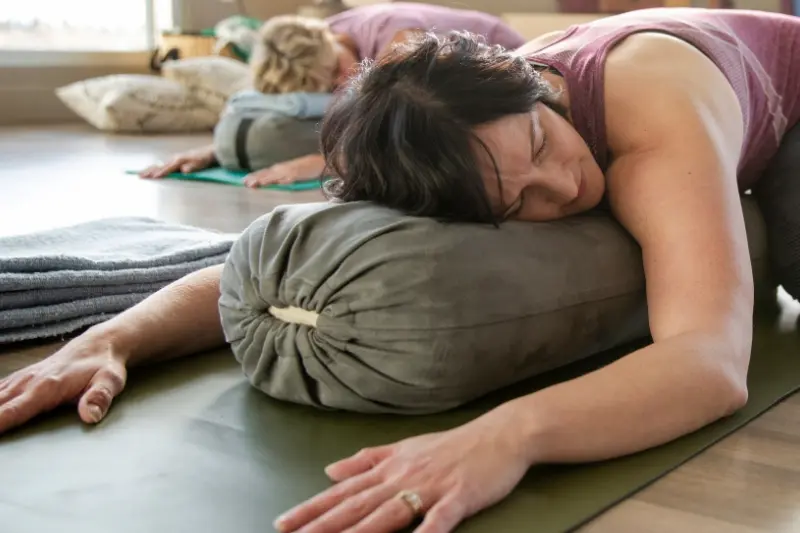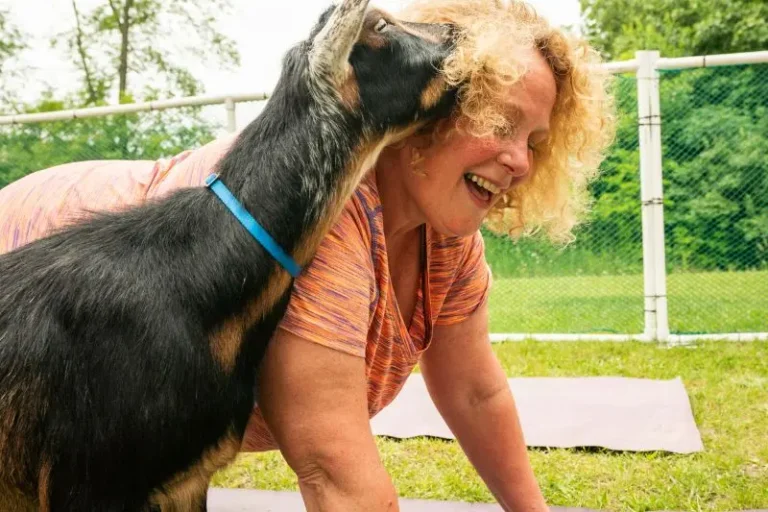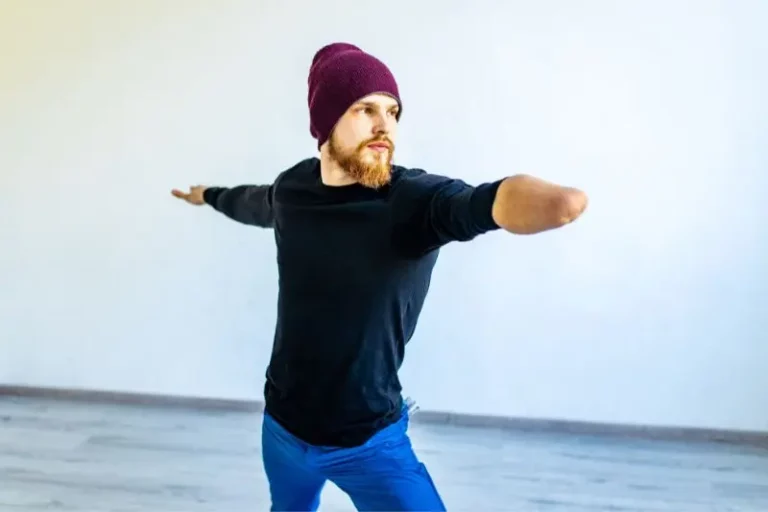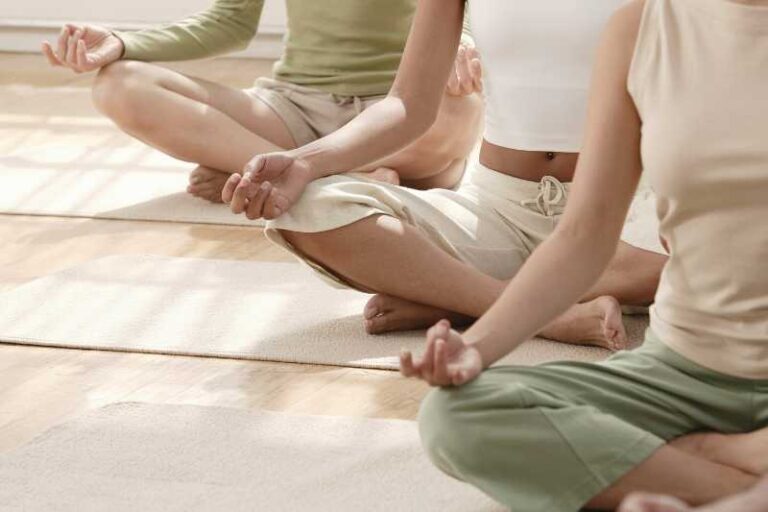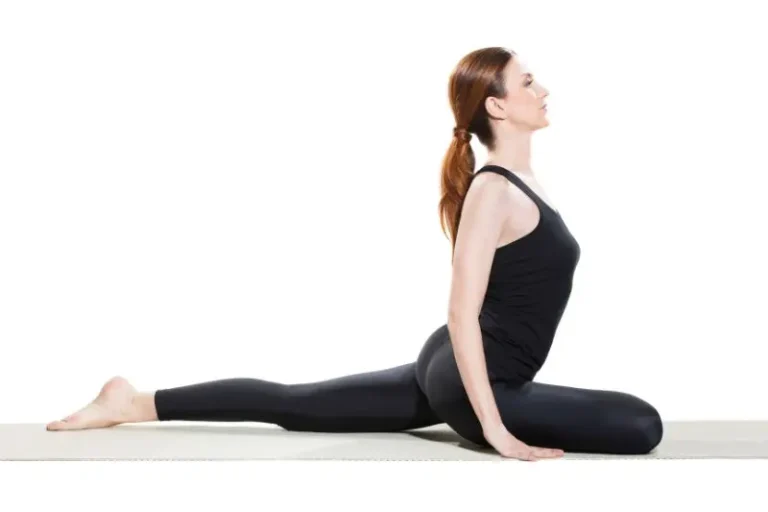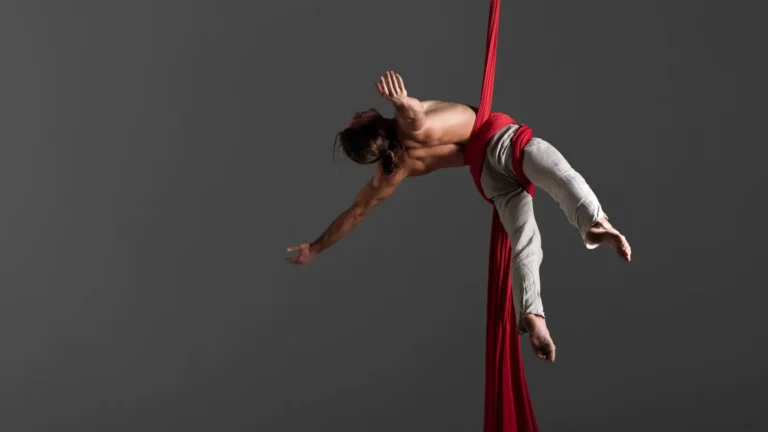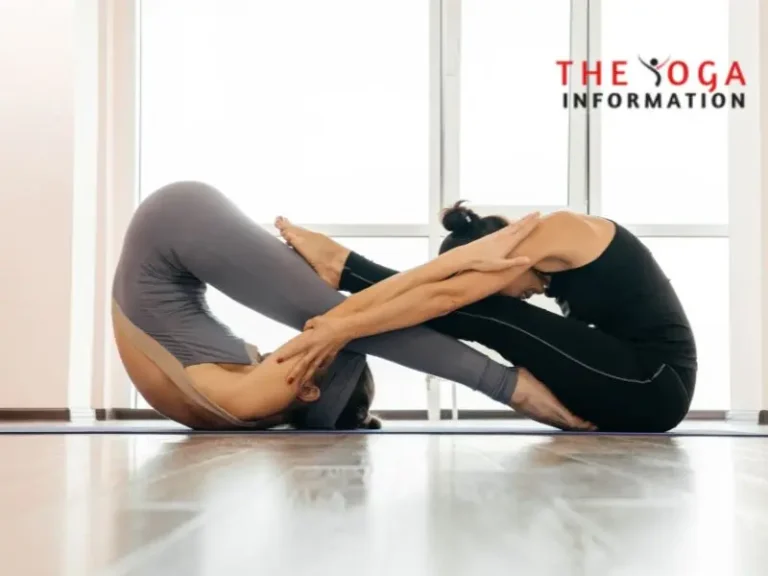As life becomes increasingly fast-paced and stressful, many people are turning to alternative methods of relaxation and healing. Restorative yoga is one such method that has gained popularity in recent years.
Introduction
Restorative yoga is a gentle form of yoga that focuses on relaxation and restoration. It involves holding poses for long periods of time, often supported by props such as blankets, bolsters, and blocks. The goal of restorative yoga is to help the body and mind relax and release tension, allowing for deeper healing and rejuvenation. Restorative yoga is especially beneficial for those who are recovering from injury or illness, experiencing stress or anxiety, or simply looking for a more calming and meditative yoga practice. With its emphasis on relaxation and restoration, restorative yoga can be a powerful tool for promoting overall health and well-being.
How to prepare for Restorative Yoga
The first step in preparing for restorative yoga is to find a quiet, comfortable space where you can practice without distractions. This could be a spare room in your house, a quiet corner of your backyard, or a local yoga studio. The important thing is to make sure that the environment is peaceful and conducive to relaxation.
Gather your props
Restorative yoga requires several props to support the body in various poses. Some essential props include bolsters, blankets, blocks, and straps. Make sure you have all the necessary props before beginning your practice. You can purchase props online or at a local yoga studio.
Dress comfortably
When practicing restorative yoga, it is important to wear comfortable, loose-fitting clothes that allow for a full range of motion. Choose clothing that is breathable and lightweight, such as yoga pants and a tank top. Avoid wearing restrictive clothing that may interfere with your practice.
Set an intention
Before beginning your practice, take a few moments to set an intention for your practice. This could be anything from reducing stress and anxiety to improving flexibility and mobility. Setting an intention helps to focus the mind and create a sense of purpose in your practice.
Warm up
Although restorative yoga is a gentle practice, it is still important to warm up the body before beginning your practice. Start with a few simple stretches, such as cat-cow or seated forward folds, to loosen up the muscles and prepare the body for the rest of the practice.
Follow a sequence
Restorative yoga typically involves holding poses for an extended period of time, so it is important to follow a sequence that gradually builds in intensity. Begin with gentle poses, such as a supported child’s pose or reclining butterfly pose, and gradually move into more challenging poses as your body becomes more relaxed and receptive.
Practice mindfulness
Restorative yoga is an excellent practice for cultivating mindfulness and awareness. Throughout your practice, focus on your breath and the sensations in your body. Notice any areas of tension or discomfort and use your breath to release the tension and create space in the body.
Restorative Yoga Poses
Restorative Yoga poses help to calm the mind, reduce stress, and release tension from the body. Here are five Restorative Yoga poses that you can try to help you unwind and feel more centered.
1. Supported Child’s Pose
This pose is a gentle stretch for the hips, thighs, and lower back. To begin, start in a kneeling position with your toes touching and your knees hip-width apart. Place a bolster or pillow in front of you and slowly lower your torso onto it. Rest your forehead on the bolster and extend your arms alongside your body. Stay in the pose for 5-10 minutes, breathing deeply and slowly.
2. Legs up the Wall
This pose is great for reducing swelling in the legs and feet, and for calming the nervous system. To start, sit sideways next to a wall with your legs extended in front of you. Lie down on your back and extend your legs up the wall. Place a bolster or pillow under your hips for support. Rest your arms alongside your body and close your eyes. Stay in the pose for 5-10 minutes, breathing deeply and relaxing.
3. Supported Bridge Pose
This pose is a gentle backbend that stretches the spine, chest, and thighs. To begin, lie on your back with your knees bent and your feet on the floor. Place a block or bolster under your hips and lift your hips up towards the ceiling. Rest your arms alongside your body or interlace your fingers under your back. Stay in the pose for 5-10 minutes, breathing deeply and opening your chest.
4. Supported Reclining Twist
This pose is great for releasing tension in the back and hips, and for improving digestion. To start, lie on your back with your knees bent and your feet on the floor. Place a bolster or pillow under your knees and extend your arms out to the sides. Slowly lower your legs to one side, keeping your shoulders on the ground. Stay in the pose for 5-10 minutes, breathing deeply and relaxing.
5. Supported Corpse Pose
This pose is a final relaxation pose that allows you to fully let go and release any remaining tension in the body. To begin, lie on your back with your legs extended and your arms alongside your body. Place a bolster or pillow under your knees and a blanket over your body for warmth. Close your eyes and focus on your breath, allowing your body to completely relax. Stay in the pose for 10-15 minutes, or as long as you like.
Benefits of Restorative Yoga Poses
Restorative Yoga is a form of yoga that promotes relaxation and rejuvenation. It is a gentle and slow-paced practice that focuses on deep breathing and supported poses. In this article, we will discuss the benefits of Restorative Yoga poses, which include reducing stress and anxiety, improving sleep quality, enhancing flexibility and mobility, and relaxing the mind and body.
Reducing Stress and Anxiety
Restorative Yoga poses have been shown to reduce stress and anxiety levels. The slow and gentle movements help to calm the nervous system and reduce the production of stress hormones like cortisol. Restorative Yoga also encourages deep breathing, which helps to lower heart rate and blood pressure, promoting a sense of calm and relaxation.
Improving Sleep Quality
Restorative Yoga poses have been shown to reduce stress and anxiety levels. The slow and gentle movements help to calm the nervous system and reduce the production of stress hormones like cortisol. Restorative Yoga also encourages deep breathing, which helps to lower heart rate and blood pressure, promoting a sense of calm and relaxation.
Enhancing Flexibility and Mobility
Restorative Yoga poses are designed to gently stretch and release tension in the body. By holding poses for an extended period of time, Restorative Yoga helps to increase flexibility and mobility. This can be especially beneficial for people who suffer from chronic pain or stiffness.
Relaxing the Mind and Body
Restorative Yoga is a great way to relax the mind and body. By focusing on the breath and holding supported poses, it can help to release tension and promote a sense of calm. Restorative Yoga can be especially beneficial for those who struggle with anxiety or depression.
Frequently Asked Questions about Restorative Yoga
How often should I practice Restorative Yoga?
Restorative Yoga can be practiced daily or as often as you like. Even just a few minutes of Restorative Yoga every day can help you unwind and relax. Some people prefer to practice Restorative Yoga in the evening to help them wind down from the day.
Can Restorative Yoga help with chronic pain?
Yes, Restorative Yoga can be very helpful for people with chronic pain. The gentle poses and deep breathing can help to release tension in the body, which can help to reduce pain. Restorative Yoga can also help to improve flexibility and range of motion, which can also help to reduce pain.
Is Restorative Yoga suitable for beginners?
Yes, Restorative Yoga is suitable for beginners. The poses are gentle and supported, so they are accessible to people of all fitness levels. Restorative Yoga is a great way to get started with yoga, especially if you are looking for a gentle practice that focuses on relaxation.
Conclusion
Restorative Yoga is an excellent practice for those seeking a gentle yet effective form of exercise that promotes relaxation, stress relief, and overall well-being. Whether you’re dealing with chronic pain, stress, or simply want to improve your physical and mental health, Restorative Yoga is a great choice. So why not give it a try? Your mind and body will thank you.
